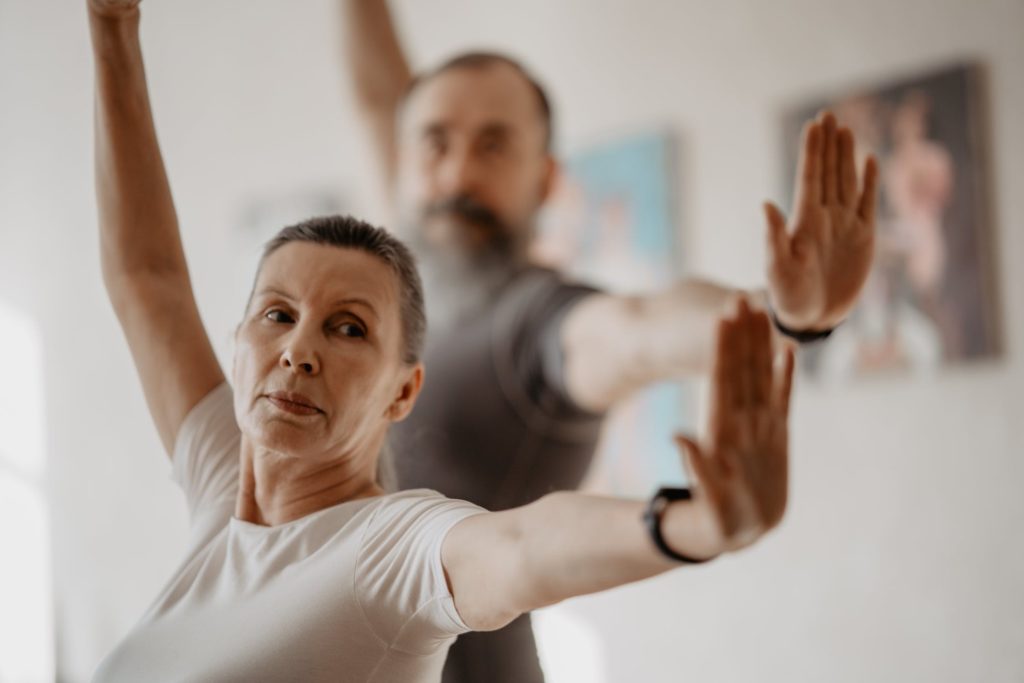As we get older, our muscles and bones become weaker. It’s simply a fact of life that many seniors have to live with, especially those who have always been athletic and now find themselves having to slow down a little. Age does not determine your energy or fitness level, but it does have an impact on what exercises are safe. As with any age in life, exercise is an important part of overall health and nutrition — perhaps even more so when you’re older and your health is not operating at peak performance levels.

Yoga is a safe and easy enough form of exercise for seniors. It’s ideal for beginners getting into exercise for the first time or former fitness buffs looking for a slower pace. Read on to find out more.
Yoga
Yoga has been an Indian practice for several millennia according to yogigo.com, but the Western practice of yoga is fairly young in comparison. In the late 19th century, the spiritual and physical practice of yoga made its way to the West as a primarily physical practice, but today, many practitioners in modern society incorporate a spiritual component.
Known as meditative yoga, this multi-discipline approach combines the fitness aspects of yoga with its relaxing, spiritual side to bring about physical and mental balance. If you’re curious to learn more about yoga and how you can apply it to your life, author Stephen Cope’s The Wisdom of Yoga (about $15 on Amazon) is a good place to start.
Dedication and Getting Started
The key to making any exercise program work for you is to commit to it. A workout schedule can help you get into a pattern, which will eventually lead to a habit. If you commit to yoga and meditation every morning at 8 a.m., the routine will stick — and MindBodyGreen notes you’ll soon end up with a healthy yoga habit.
A dedicated space in your home can also motivate you to practice yoga daily. Although it is possible to roll out a yoga mat anywhere to practice, dedicated space at home will help you remain committed. Anytime you look at it, you’ll be reminded to start a session.
A clutter-free environment will also help you stay focused, calm and centered without the countless distractions of the things surrounding you. Cleansing your house of clutter helps to clear your living space of bad energy, making room for positive vibes. Most people don’t have a spare room lying around, but you can place your unused belongings into storage to remove a little clutter from your home to make room for your practice. Aside from storing your belongings from the yoga room, you can use the extra space for other furniture that you want to clear out from the house.
Benefits
- Increased flexibility
- Improved balance
- Increased strength
- Better joint mobility
- Pain management
- Improved breathing
- Weight loss
- Cardiovascular health
- Increased energy
- Reduction in arthritic and back pain
When you focus on yoga for its spiritual and mental effects, the benefits include:
- Improved moods
- Confidence
- Reduced stress
- Mindfulness
- Discipline
- Improved concentration
- Reduced symptoms of depression and anxiety
Yoga can also improve dental health. Cigna notes that chronic stress can lead to a reduction in healthy oral care habits, but practicing meditative yoga can give your mind the boost it needs to make other components of your health a priority, including simple actions like brushing your teeth and showering. While yoga can improve oral health, you should still find a dentist if you have any chronic issues such as jaw or tooth pain.
Now that you’re ready to start your yoga practice, throw on a video and start a flow. If doing yoga at home is not for you, then it should be easy to find a class or senior group to join. The social aspect of classes could help you stay interested for years to come, elevating you from beginner to expert yogi in no time.
Photo credit: Pexels
